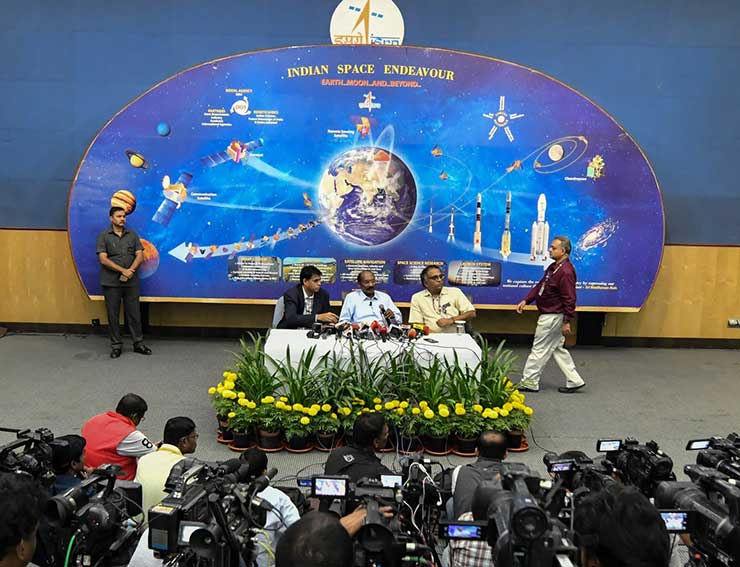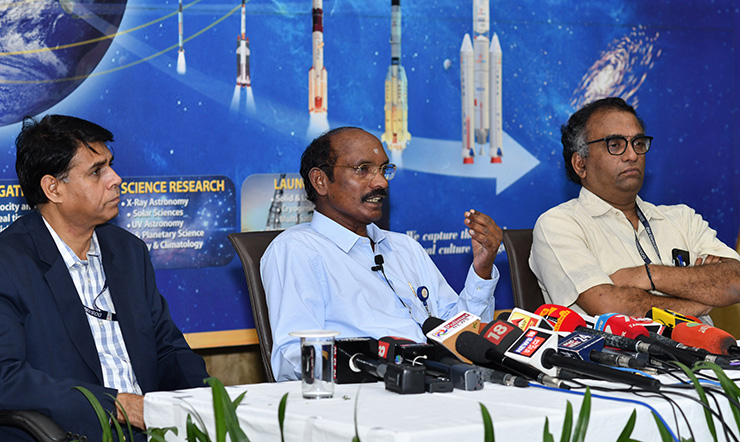
New Delhi. India has selected four astronauts for the country’s first manned mission and as Chief of Indian Space Research Organisation (ISRO) K. Sivan said January one that “this is going to be the year of Chandrayaan-3 and Gaganyaan.”
The astronauts training will start in the third week of January. Gaganyaan aims to send a three-member crew to space for a period of five to seven days. The spacecraft will be placed in a low earth orbit of 300-400km.
“We have identified the four astronauts, they were sent to Russia for medical checkup. They will undergo training in Russia,” the ISRO chief said. An advisory committee has also been formed for Gaganyaan. The training of the astronauts in Russia was finalised after Prime Minister Narendra Modi met Russian President Vladimir Putin in September last year.
The two leaders decided to step up cooperation in the field of outer space.
“There was a special test for these astronauts. This was initially conducted at an IIM and then in Russia and based on the results, four people were selected. They are from the Air Force,” Sivan said.
Gaganyaan is reported to have two unmanned and one manned flight to space. “We will be sending a humanoid as part of unmanned mission. Six science experiments will be conducted, related to microgravity and bioscience,” Sivan said.
The ISRO chief also added that work has begun on Chandrayaan-3, and has received the government’s approval. He added that work is continuing parallel on Gaganyaan and Chandrayaan-3, which might take 14-16 months, which could result in works being pushed to 2021. The overall cost of the project will be around Rs 600 crore.
Addressing the issues with Chandrayaan-2, Sivan said that they have made good progress on it even though they could not land successfully. “The orbiter is still functioning, and it is going to function for the next seven years to produce science data,” he said. Chandrayaan-3 will be a repeat of Chandrayaan-2, and will link to the Chandrayaan-2 orbiter already in space. P Veeramuthuvel, who was the associate director will be the project director for Chandrayaan-3.
“There is no objective difference between Chandrayaan-2 and Chandrayaan-3 because we couldn’t accomplish the target we had. So, in Chandrayaan-3, we want to demonstrate a soft landing. To carry lander from here to the moon, we don’t have an orbiter. A dedicated vehicle will take the lander to the moon. The lander will be a replica of the Vikram Lander,” said the ISRO chief.
Chandrayaan-2, India’s most ambitious lunar mission was launched onboard a heavy rocket (GSLV Mark-III) from Sriharikota on July 22, 2019. The spacecraft comprised of three segments – the Orbiter, the lander ‘Vikram’ and rover ‘Pragyan’. It was the first space mission to attempt a soft landing on the moon’s South Polar region. The lander was scheduled to make a soft landing on the moon’s south pole on September 7. But Vikram lander made a hard landing on the surface of the moon.
When asked if the landing location would be changed for Chandrayaan-3, the ISRO chief said that there was no issue with the landing location.

“We have learnt from failures. We understood what went wrong,” he said.
The debris of the lander was flagged by Chennai techie Shanmuga Subramanian, after which NASA released pictures of the landing site.
Sivan said that he appreciated the techie’s efforts and congratulated him. When asked why ISRO did not release the pictures on its own, he said, “We are absolutely transparent. The day after Chandrayaan-2 made a hard landing, we had announced that we had located where it landed and we had located the debris. We didn’t put pictures because that is strategic information.”
In addition to the missions planned this year, the ISRO chief also announced that a second space port will be coming up in Tamil Nadu’s Thoothukudi, for which land acquisition has been initiated. The space port will be spread over an area of 2300 acres.
As earlier announced, ISRO will be launching the Small Satellite Launch Vehicle (SSLV) for the first time this year. The first few SSLV launches will be from Sriharikota in Andhra Pradesh.
Sivan said satellites that were slated for launch in 2019 but weren’t done yet will be launched by March 2020, and that a total of 25 missions are planned for this year.
In 2020, ISRO will also be launching its own GPS system, and mobile phones will be equipped with NavIC. NavIC is the operational name of the Indian Regional Navigation Satellite System, an autonomous regional satellite navigation system. NavIC, the satellite, has been operational since 2018, and is part of ISRO’s aim to give India its own version of GPS.








